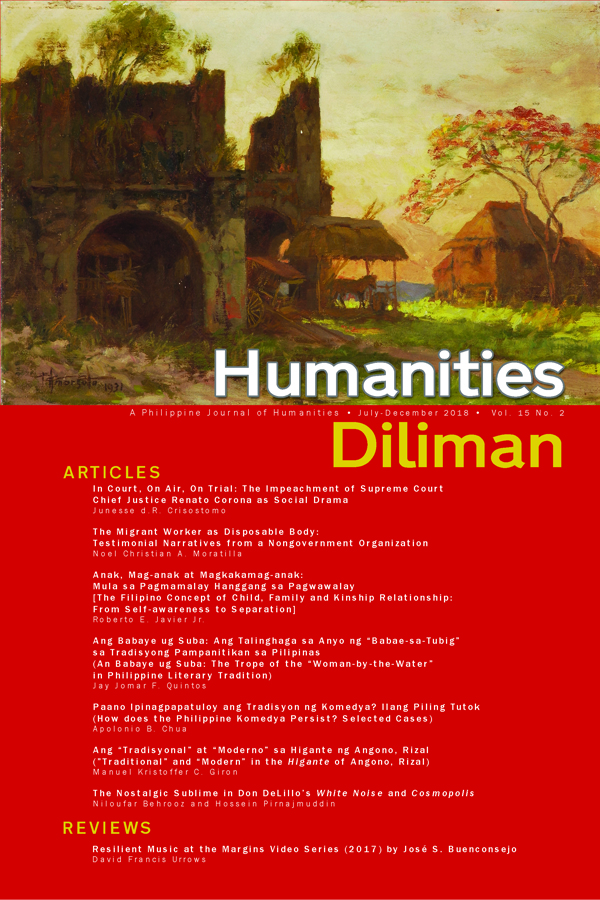An Babaye ug Suba: Ang Talinghaga sa Anyo ng “Babae-sa-Tubig” sa Tradisyong Pampanitikan sa Pilipinas<br> (An Babaye ug Suba: The Trope of the “Woman-by-the-Water” in Philippine Literary Tradition)
Abstract
The image of a “woman-by-the-water” has always been a recurring motif in Philippine epics and folk narratives. The folk tales of the different ethnolinguistic groups in the Philippines have always featured a story about a woman who takes a bath in the river and who gets impregnated by some magical elements. However, this discursive image was wrought by the different colors and shapes of colonization. The colonial literary texts like the legends of Mariang Makiling, Maria Cacao, and the parang sabil of Putli’ Isara have transformed the daring and robust image of the “woman-by-the-water” into an emotionally-laden woman who weeps, is sexually taken advantage of, and seeks revenge. This paper attempts to trace the trajectory of the “woman-bythe- water” from precolonial, colonial, and neocolonial Philippines by analyzing indigenous and modern literary texts. The paper also seeks to analyze the diachronic and synchronic discourses that affect the transformation.
Keywords: Philippine folklore, indigenous studies, gender studies, oral literature, Visayan and Mindanao studies


